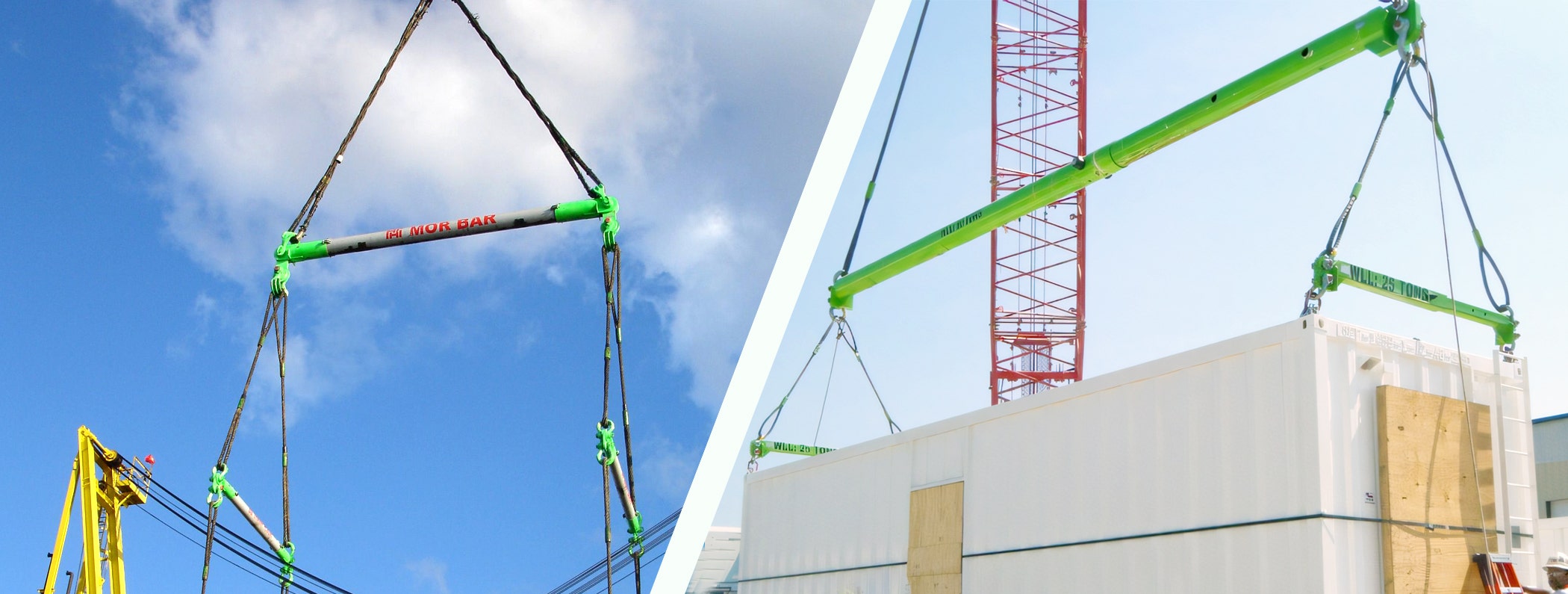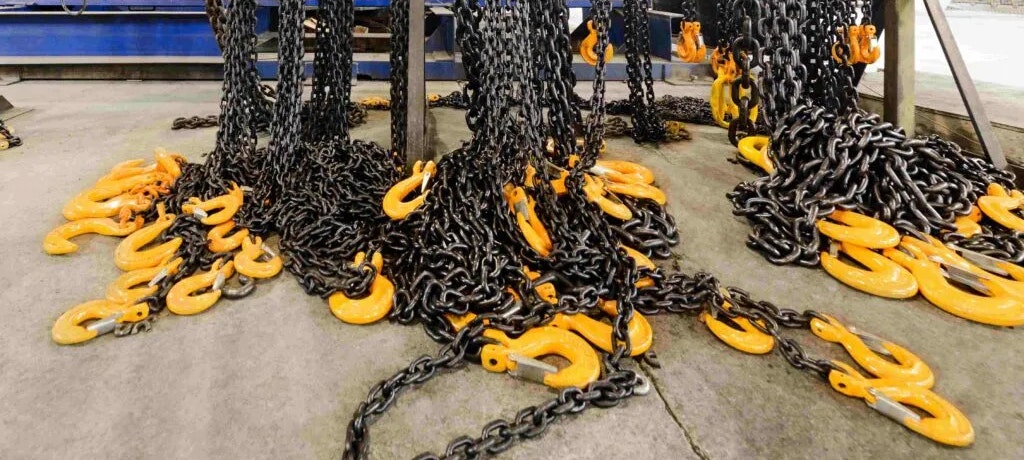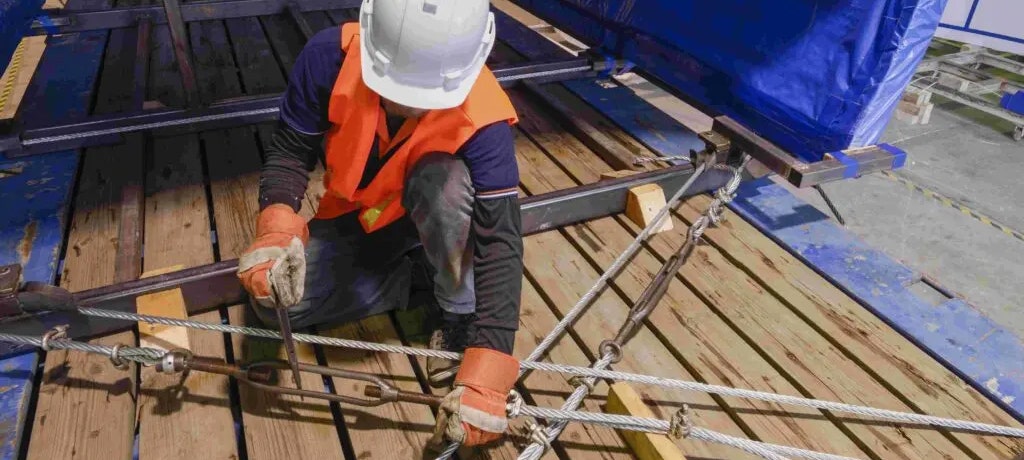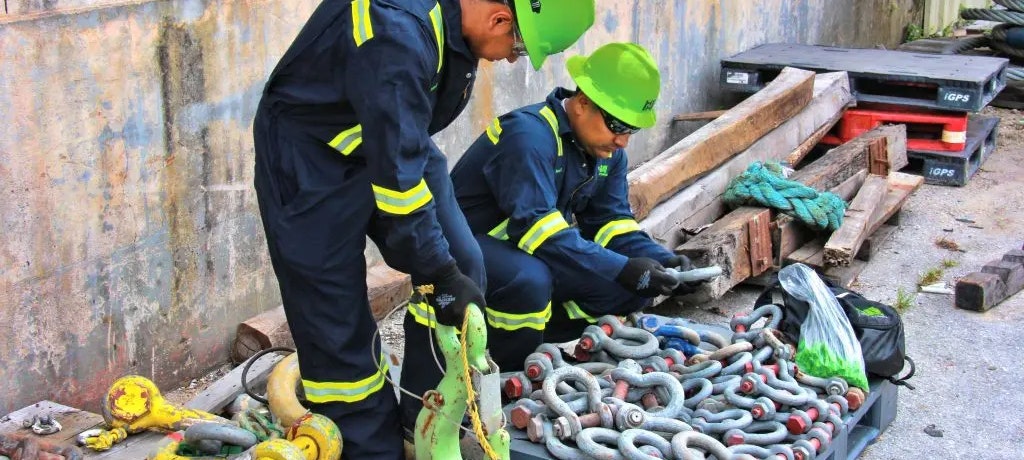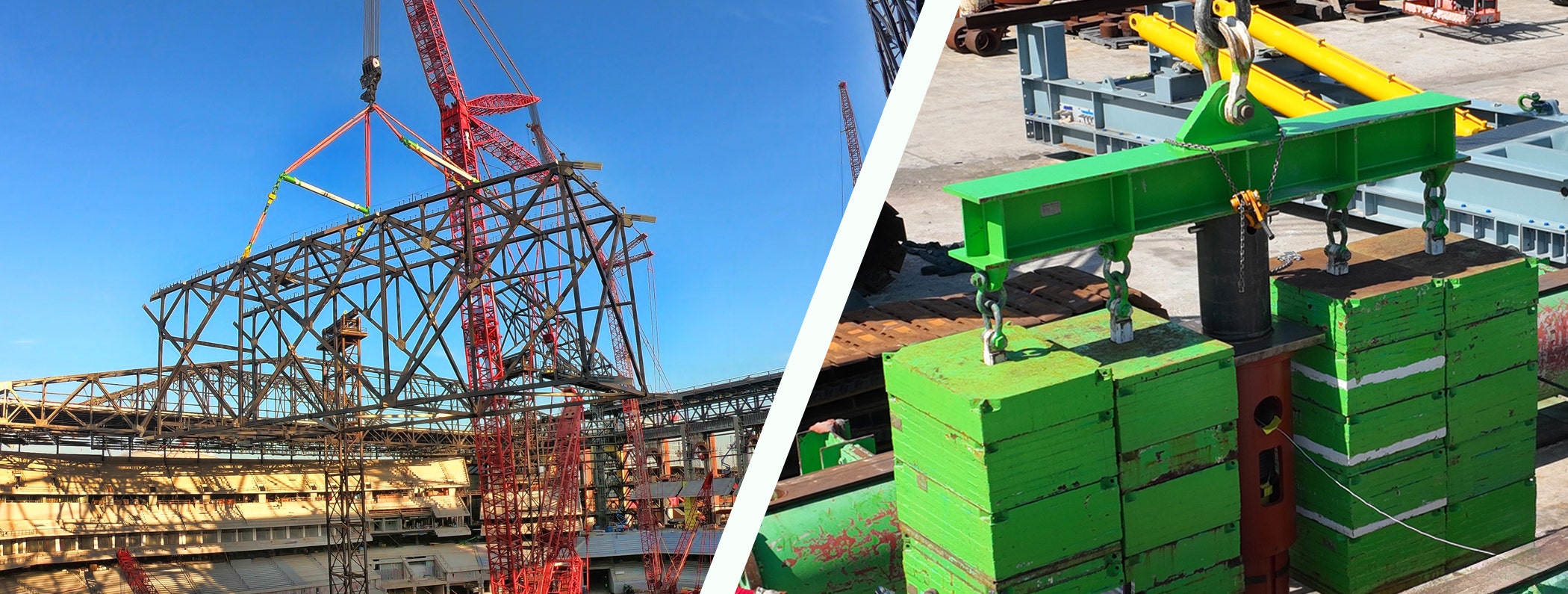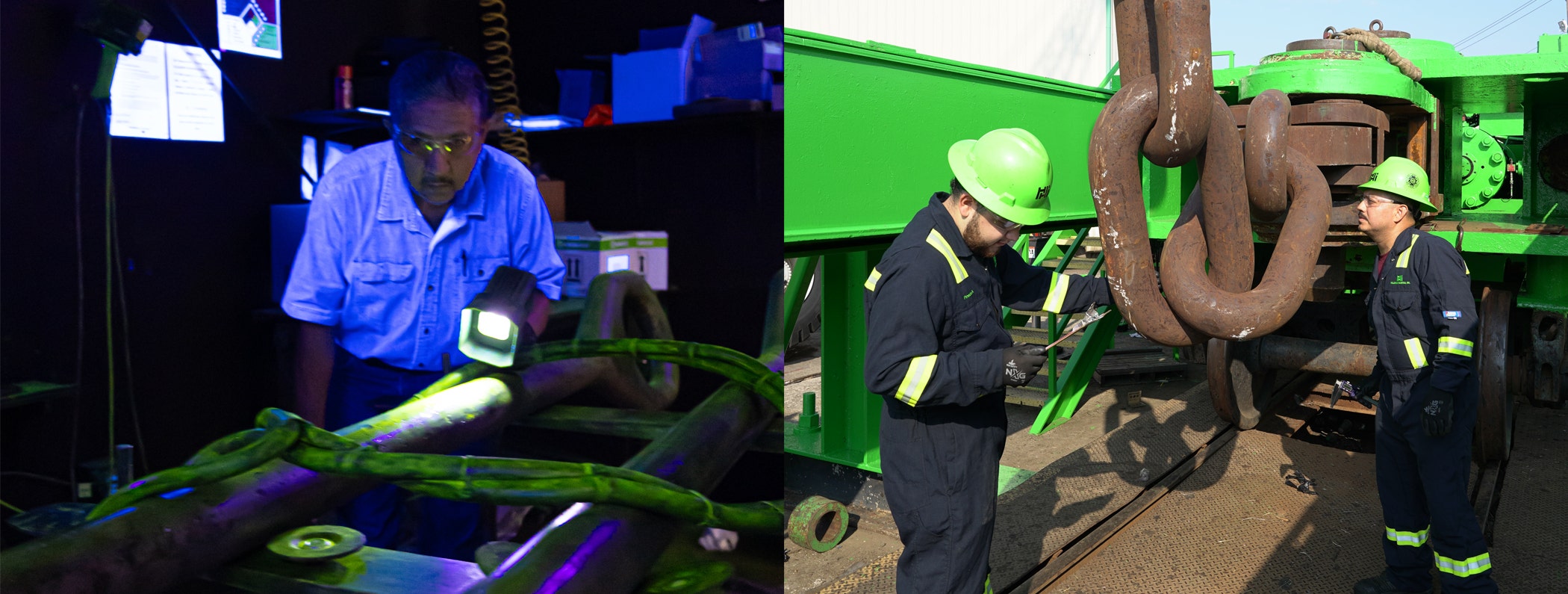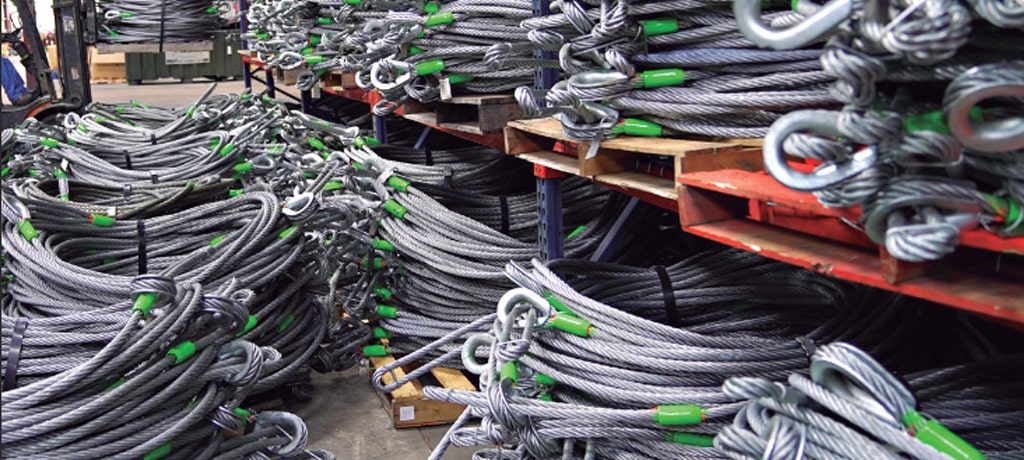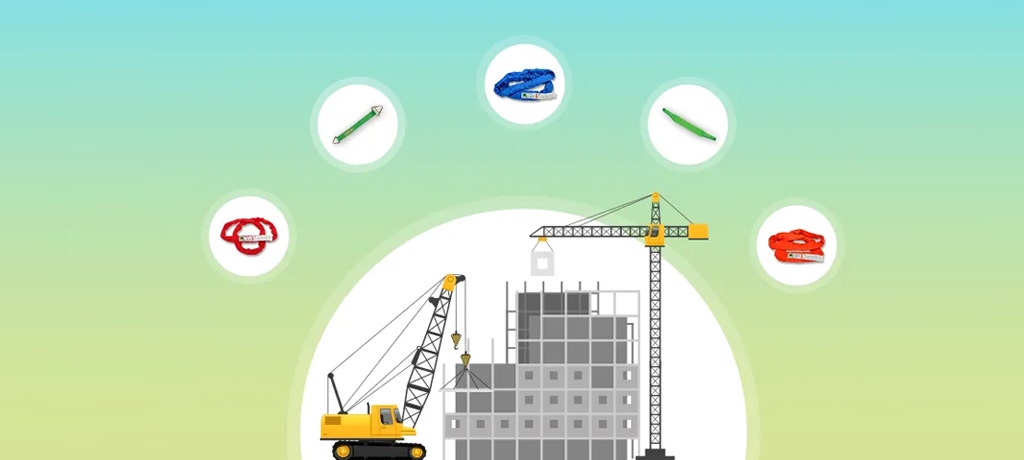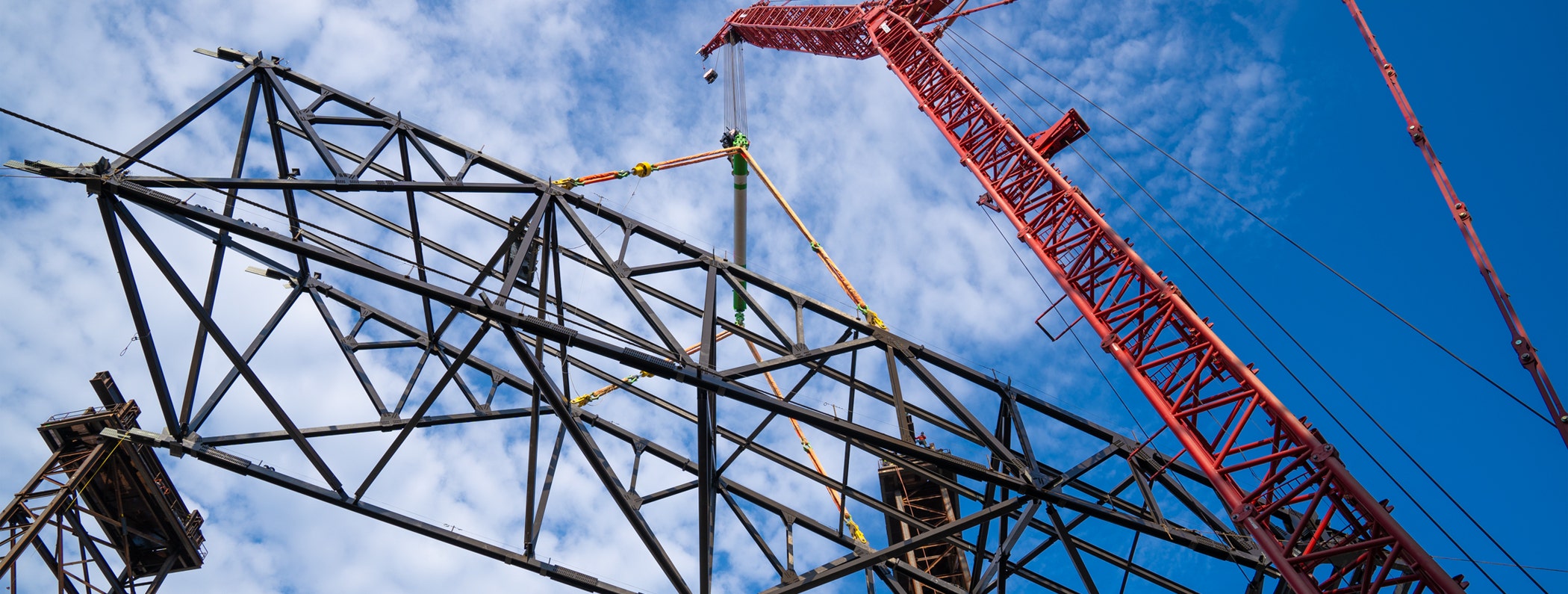When it comes to slings, there are two notable types: round slings and webbing slings. For a beginner, these may seem interchangeable. However, there are significant differences between the two. The most common ones are in terms of weight capacity and flexibility...
When lifting heavy loads, it is important to use the right lifting equipment. The wrong equipment can lead to accidents and injuries. Two common types of lifting equipment are spreader bars and lifting beams...
Industrial Spreader Bars: Types, Applications, and Safety Considerations
A spreader bar works by distributing a load across more than one point, increasing the stability and decreasing the load applied during hoisting. They typically have two lifting points going up to transmit the load to the crane and two going down to attach the object required to be lifted.
Comprehensive Inspection Guide for Alloy Chain Slings
Alloy chain slings are widely used in heavy lifting, crane rigging, and transporting heavy goods. They play a vital role in industries such as power, manufacturing, mining, and petroleum. Known for their strength and long lifespan, alloy chain slings can last 20-30 years with proper care. However, regular inspection is crucial to maintain safety for operators and prevent equipment failure.
Best Practices for Inspecting, Replacing, and Maintaining Wire Rope Slings
Wire rope slings have played a critical role in applications like lifting, rigging, and hoisting. They are usually made from galvanized or un-galvanized steel wire strands, which are woven into ropes with end terminations. The end terminations can be loops or hooks.
When is the Best Time of the Year to Check Your Rigging Hardware?
We know there are select times that are perfect for things like air conditioning maintenance and lawn care, but what about lifting inspections? When is the best time of year to check your rigging hardware, and how often should your inspections be?
What You Need to Know About Effective Synthetic Sling Safety
Synthetic slings are used in dozens of industries for a variety of lifting and rigging procedures. They’re convenient, strong, economical, and generally safe to use. However, that doesn’t mean your lifting team can skimp when it comes to safety protocols and procedures.
What’s the Difference Between a Spreader Bar and a Lifting Beam?
Spreader bars and lifting beams have quite a bit in common. Both rigging equipment are used to transport loads with overhead lifts. They’re “below-the-hook” lifting devices that stabilize and support loads, and both are used to keep rigging slings perpendicular to the horizon while moving.
How to Know When It’s Time to Replace Your Rigging Hardware?
Car tires grow old. Roof shingles fall off. Your trustworthy boots finally lose their sole. Eventually, almost everything needs to be replaced after years of frequent use – and rigging equipment is no different. You must replace your lifting and rigging gear as necessary, for the safety of your employees and the protection of your loads.
What Does the Future of Wire Rope Slings Look Like?
With so many industries being dramatically affected by today’s pandemic and resulting economy, we’re all left to wonder what the futures of our businesses hold.
Factors to Consider When Purchasing Synthetic Slings for Industrial Use
Synthetic slings serve many purposes in a variety of lifting and rigging situations. Even though they are used to lift heavy loads, the slings are easy to transport and lightweight, which makes for simple usage by one person or multiple people.
Selecting the Right Rigging Slings: A Technical Overview
Rigging slings play a key role in the lifting and material-handling industry. It’s important to understand and select the right sling for your lifting and rigging applications. If you’re unsure about which sling to choose, this article will help clarify the options and guide you on where to use them.


